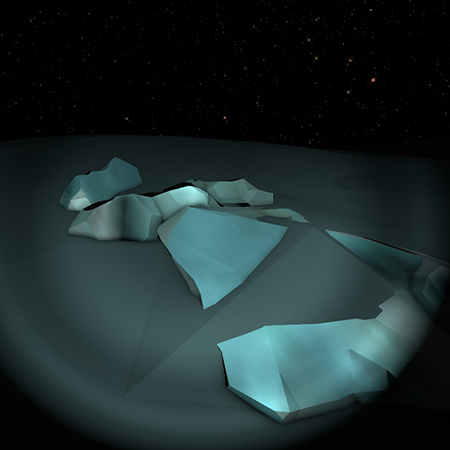Difference between revisions of "Ice (Water)"
From Unofficial Stationeers Wiki
(Change gas list to table) |
m |
||
| (10 intermediate revisions by 8 users not shown) | |||
| Line 1: | Line 1: | ||
| − | |||
<languages /> | <languages /> | ||
<translate> | <translate> | ||
<!--T:1--> | <!--T:1--> | ||
{{Itembox | {{Itembox | ||
| − | | name = Ice | + | | name = Ice (Water) |
| − | | image = [[File:{{#setmainimage: | + | | image = [[File:{{#setmainimage:ItemIce.png}}]] |
| stacks = 50x | | stacks = 50x | ||
| + | | hashid = 1217489948 | ||
}} | }} | ||
| − | {{ | + | {{Orebox |
| − | | name = Ice ( | + | | name = Ice (Water) |
| − | | image = | + | | image = [[File:Ice_ore.jpg]] |
| − | |||
| − | |||
}} | }} | ||
== Obtaining == <!--T:2--> | == Obtaining == <!--T:2--> | ||
| − | [[Ice]] is mined throughout the surface of | + | [[Ice (Water)]] is a frozen [[Ores|ore]] that can be mined throughout the surface and underground of a planet or an asteroid using a [[Mining Drill]] or [[Pickaxe]]. |
| − | + | It is recommended to equip the [[Mining Belt]] before mining, as mining ice without the belt will put the ore in the player's hand, where it may start to melt. Ice is extremely sensitive to temperature and will sublimate to gas if the surrounding temperature is at 0 °C or above. This can be avoided, even in hot environments, if the ice is placed in a [[Mining Belt]] or specific devices like the [[Ice Crusher]] (even when turned off). | |
| − | |||
| − | Ice is extremely sensitive to temperature and will sublimate to | ||
| − | + | == Processing == <!--T:3--> | |
| − | {| | + | Water Ice can be processed into a [[Pipe Network]] by placing it into an [[Ice Crusher]]. However, if you want pure [[Water|water]], it must then be [[Filtration|filtered]] as Water Ice is not pure water. |
| − | |20 mol (80%) | + | |
| − | |[[Water]] | + | If necessary, Water Ice can also be turned into a fluid by being placed on the ground or in the player's hand when the surrounding temperature is at or above 0 °C. This will release the ice's components into the surrounding [[Atmosphere|atmosphere]], however, which may not be ideal. |
| + | |||
| + | One unit of Water Ice is composed of the following components: | ||
| + | {| class="wikitable" | ||
| + | |- | ||
| + | ! '''Amount''' !! '''Material''' | ||
| + | |- | ||
| + | | 20 mol (80%) || [[Special:MyLanguage/Water|Water (H<sub>2</sub>O)]] | ||
|- | |- | ||
| − | |5 mol (20%) | + | | 5 mol (20%) || [[Special:MyLanguage/Nitrogen|Nitrogen (N<sub>2</sub>)]] |
| − | |[[Nitrogen | ||
|} | |} | ||
</translate> | </translate> | ||
Latest revision as of 00:24, 5 November 2023
 | |
| Stacks | 50x |
|---|---|
| Hash ID | 1217489948 |
 | |
| Mined with | Mining Drill, Heavy Mining Drill |
|---|---|
Obtaining[edit]
Ice (Water) is a frozen ore that can be mined throughout the surface and underground of a planet or an asteroid using a Mining Drill or Pickaxe.
It is recommended to equip the Mining Belt before mining, as mining ice without the belt will put the ore in the player's hand, where it may start to melt. Ice is extremely sensitive to temperature and will sublimate to gas if the surrounding temperature is at 0 °C or above. This can be avoided, even in hot environments, if the ice is placed in a Mining Belt or specific devices like the Ice Crusher (even when turned off).
Processing[edit]
Water Ice can be processed into a Pipe Network by placing it into an Ice Crusher. However, if you want pure water, it must then be filtered as Water Ice is not pure water.
If necessary, Water Ice can also be turned into a fluid by being placed on the ground or in the player's hand when the surrounding temperature is at or above 0 °C. This will release the ice's components into the surrounding atmosphere, however, which may not be ideal.
One unit of Water Ice is composed of the following components:
| Amount | Material |
|---|---|
| 20 mol (80%) | Water (H2O) |
| 5 mol (20%) | Nitrogen (N2) |
